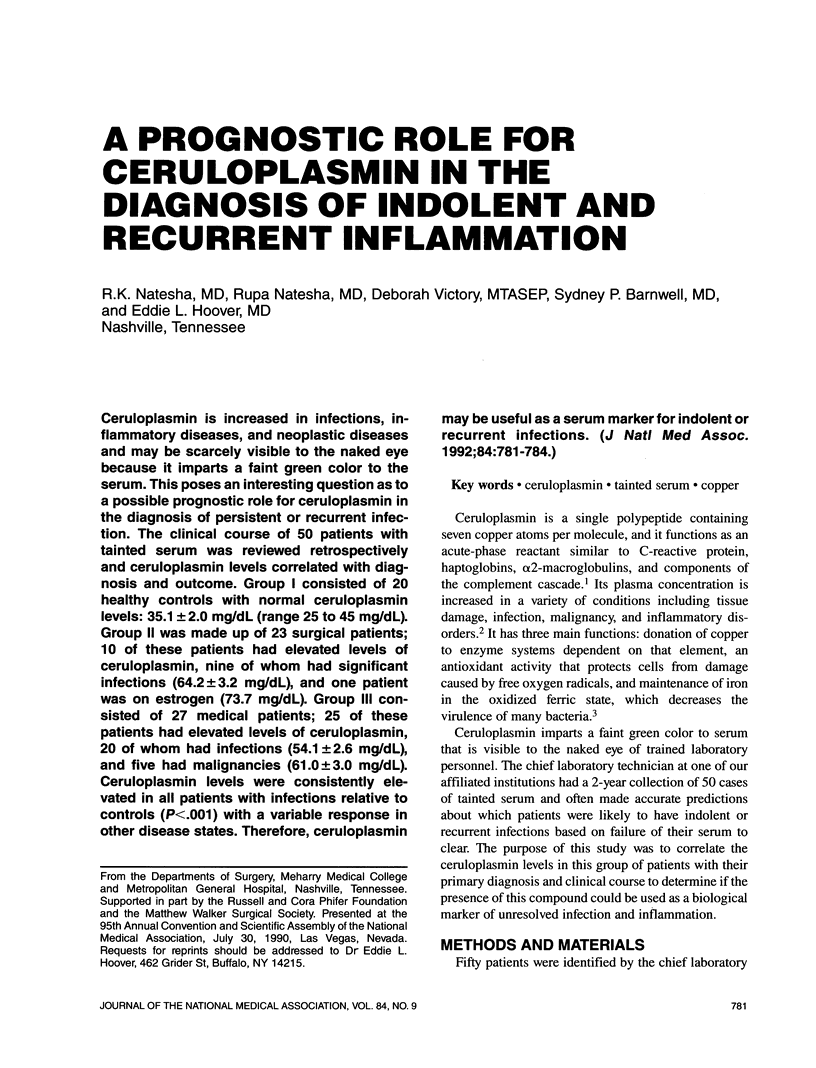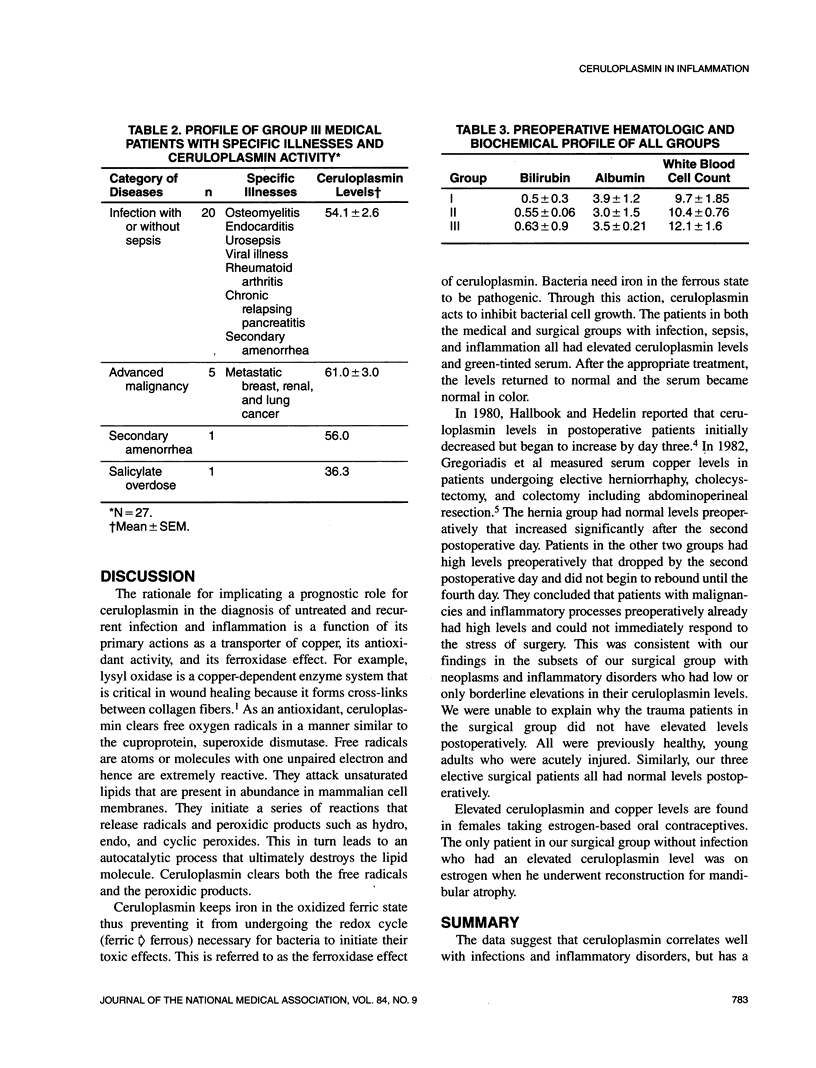Abstract
Ceruloplasmin is increased in infections, inflammatory diseases, and neoplastic diseases and may be scarcely visible to the naked eye because it imparts a faint green color to the serum. This poses an interesting question as to a possible prognostic role for ceruloplasmin in the diagnosis of persistent or recurrent infection. The clinical course of 50 patients with tainted serum was reviewed retrospectively and ceruloplasmin levels correlated with diagnosis and outcome. Group I consisted of 20 healthy controls with normal ceruloplasmin levels: 35.1 +/- 2.0 mg/dL (range 25 to 45 mg/dL). Group II was made up of 23 surgical patients; 10 of these patients had elevated levels of ceruloplasmin, nine of whom had significant infections (64.2 +/- 3.2 mg/dL), and one patient was on estrogen (73.7 mg/dL). Group III consisted of 27 medical patients; 25 of these patients had elevated levels of ceruloplasmin, 20 of whom had infections (54.1 +/- 2.6 mg/dL), and five had malignancies (61.0 +/- 3.0 mg/dL). Ceruloplasmin levels were consistently elevated in all patients with infections relative to controls (P less than .001) with a variable response in other disease states. Therefore, ceruloplasmin may be useful as a serum marker for indolent or recurrent infections.
Full text
PDF



Selected References
These references are in PubMed. This may not be the complete list of references from this article.
- Gregoriadis G. C., Apostolidis N. S., Romanos A. N., Paradellis T. P. Postoperative changes in serum copper value. Surg Gynecol Obstet. 1982 Feb;154(2):217–221. [PubMed] [Google Scholar]
- Gutteridge J. M., Stocks J. Caeruloplasmin: physiological and pathological perspectives. Crit Rev Clin Lab Sci. 1981;14(4):257–329. doi: 10.3109/10408368109105866. [DOI] [PubMed] [Google Scholar]
- Hallbök T., Hedelin H. Changes in serum copper and serum ceruloplasmin concentration induced by surgical trauma. Acta Chir Scand. 1980;146(6):371–373. [PubMed] [Google Scholar]


